Steel and Walnut
Montana American Legends Rifle
feature By: John Haviland | September, 19
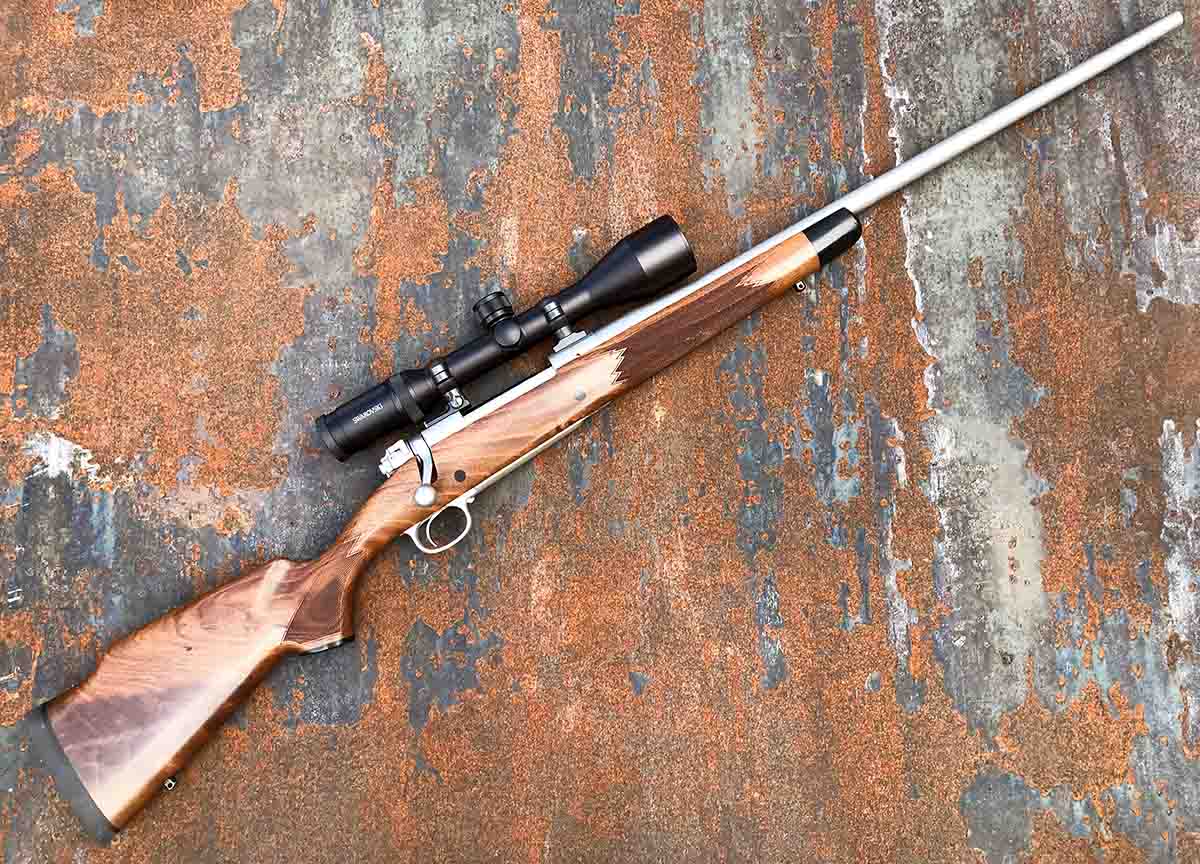
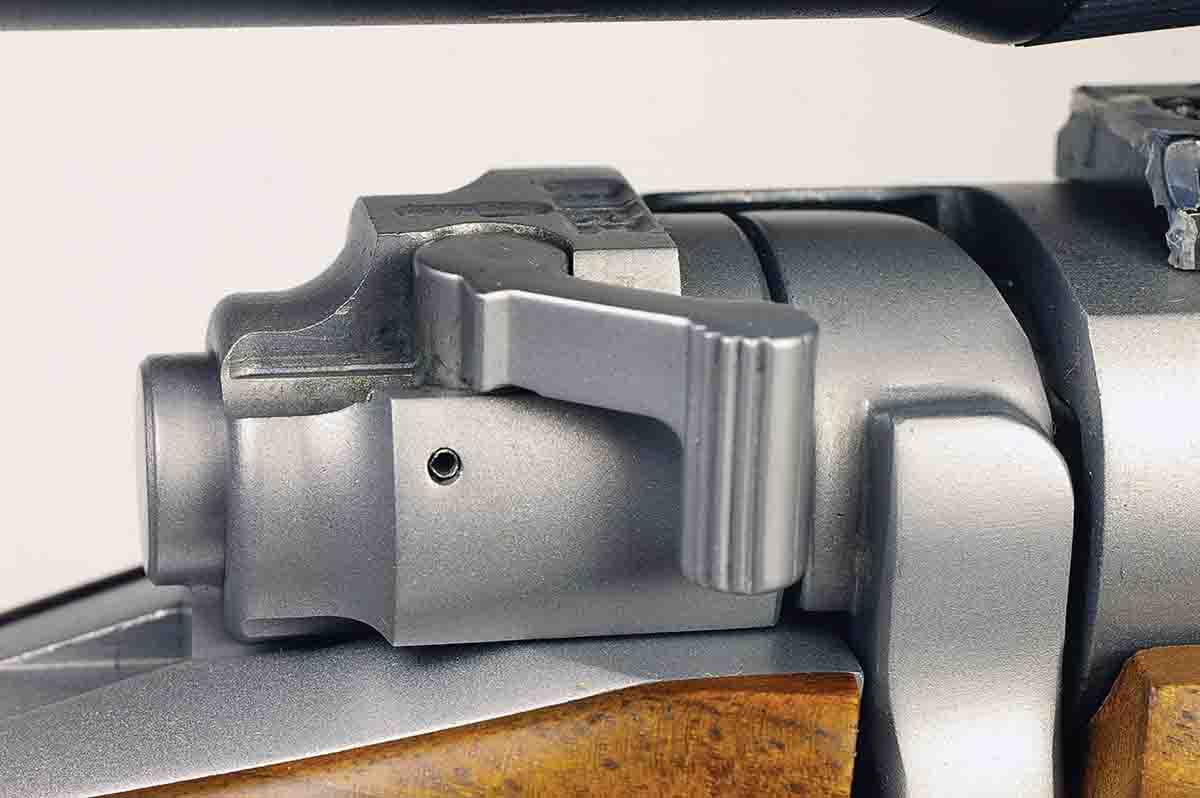
Montana Outdoor Group bought Montana Rifle in 2018 from Brian Sipe, the founder and owner. New machinery is in place, which has brought manufacturing of its flagship Model 1999 action in-house to Montana Rifle’s factory on the outskirts of Kalispell, Montana. Barrels are made next door at the Montana Custom Barrel division.
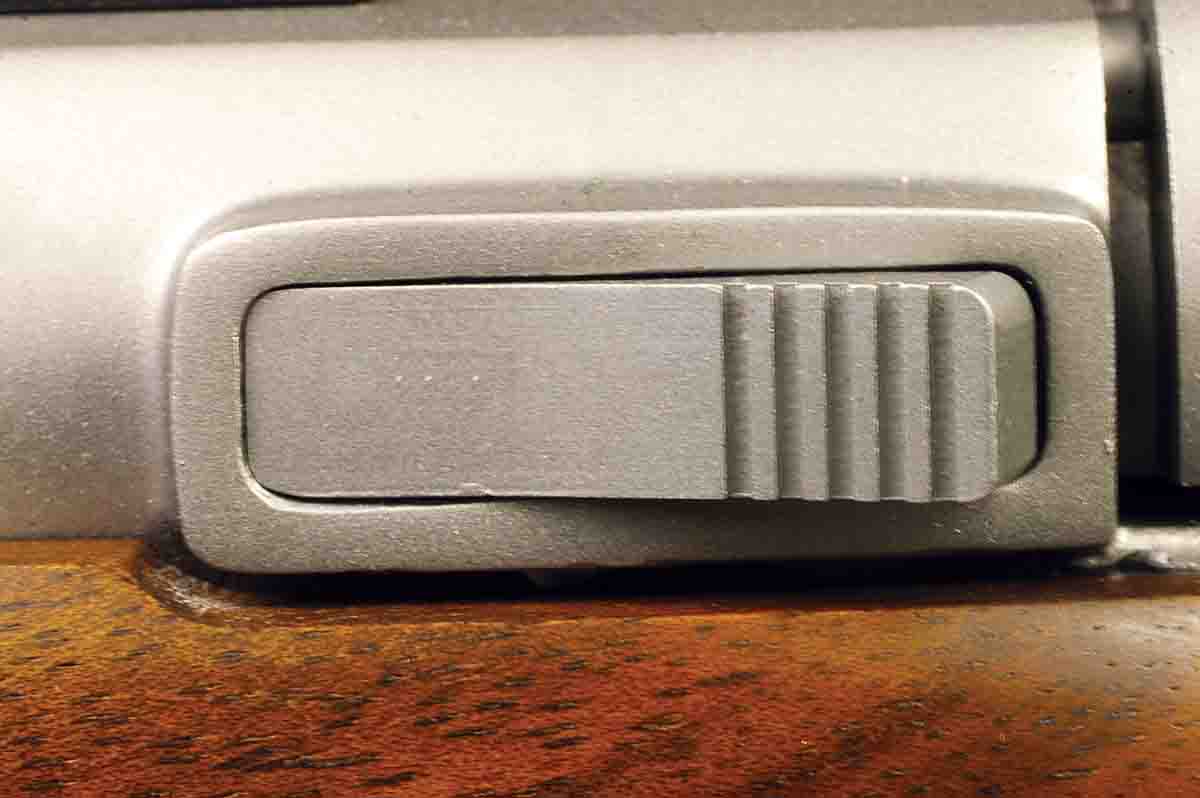
The Model 1999 action is very similar to a controlled-round feed Winchester Model 70 with a few innovative features. Both actions have comparable profiles and flat bottoms with a large integral recoil lug. The left locking lug on the Model 1999 is dovetailed and rides in a raceway within the receiver to keep the bolt running straight and smooth. The 1999’s bolt sleeve includes a Mauser ’98-style flange to deflect escaped propellant gases away from the shooter’s face in the unlikely event a case ruptures. The bolt body and handle are one piece.
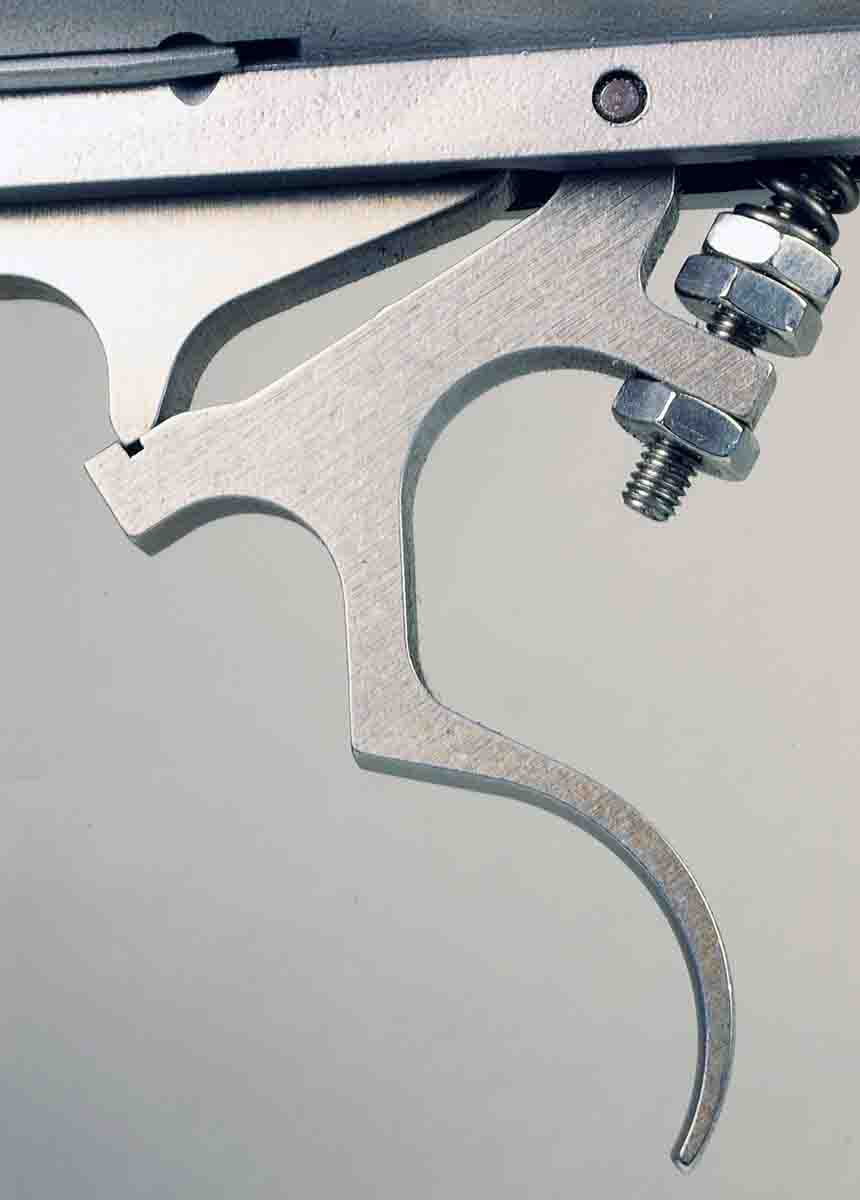
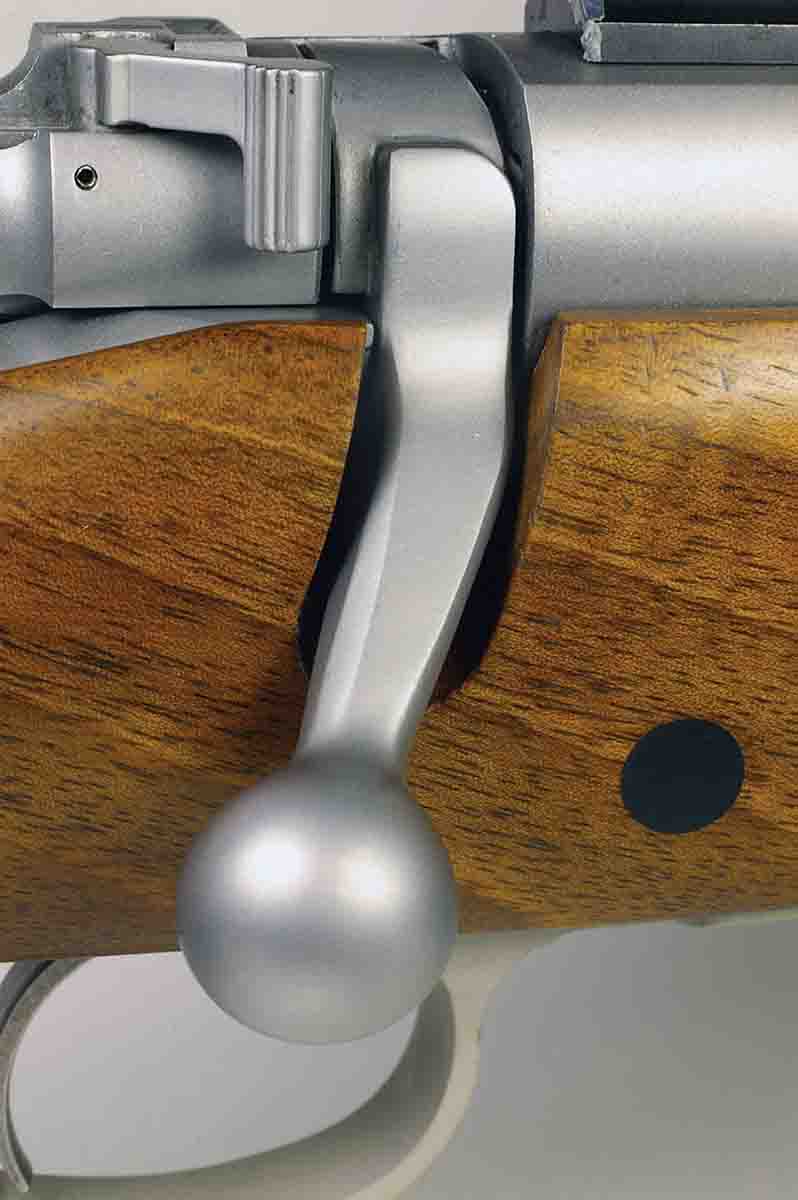
The Legends I’ve been shooting is chambered in .270 Winchester and is the ALR-SS (stainless steel) model. All the metal is brushed “satin” finished right down to its one-piece trigger guard and magazine floorplate. The magazine holds five cartridges.
Although the barrels are button rifled and their bores are hand lapped to a mirror finish, Montana Rifle stills suggests breaking-in a new barrel: “The bore of your new barrel has ‘pores’ and as you break in the barrel these ‘pores’ are smoothed over.” Folkersen said the break-in procedure fills in the slight voids in the bore’s surface.
The suggested break-in procedure is to scrub the barrel with a bronze brush soaked in cleaning solvent after every shot for 10 shots. Next, patches soaked in a copper-removing solvent are run through the barrel until no blue (indicating copper fouling) appears on a patch. Cleaning with soaked patches is repeated after every five shots for 30 shots. If copper fouling is still present, the instructions advise to start at the beginning and repeat the break-in.
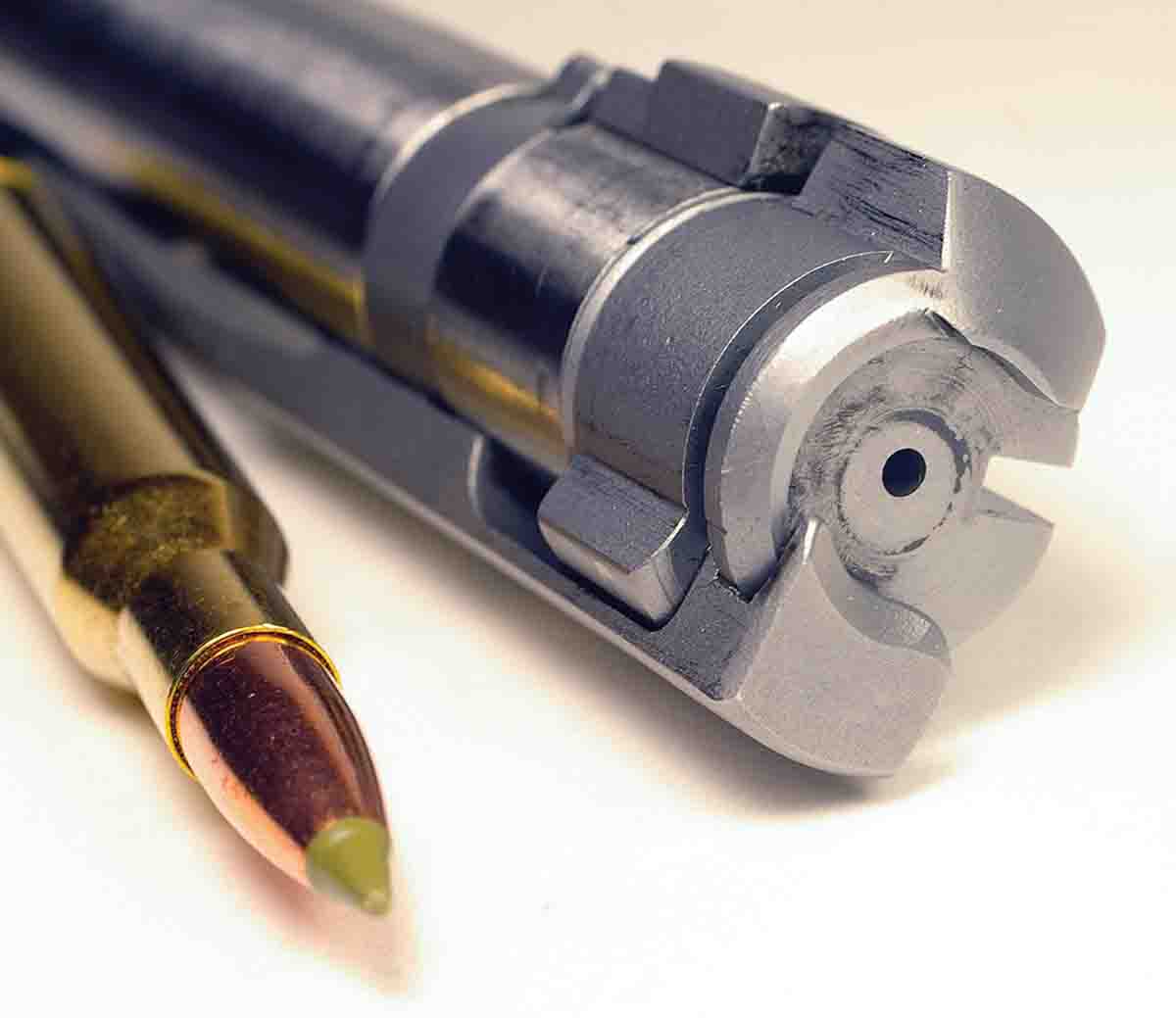
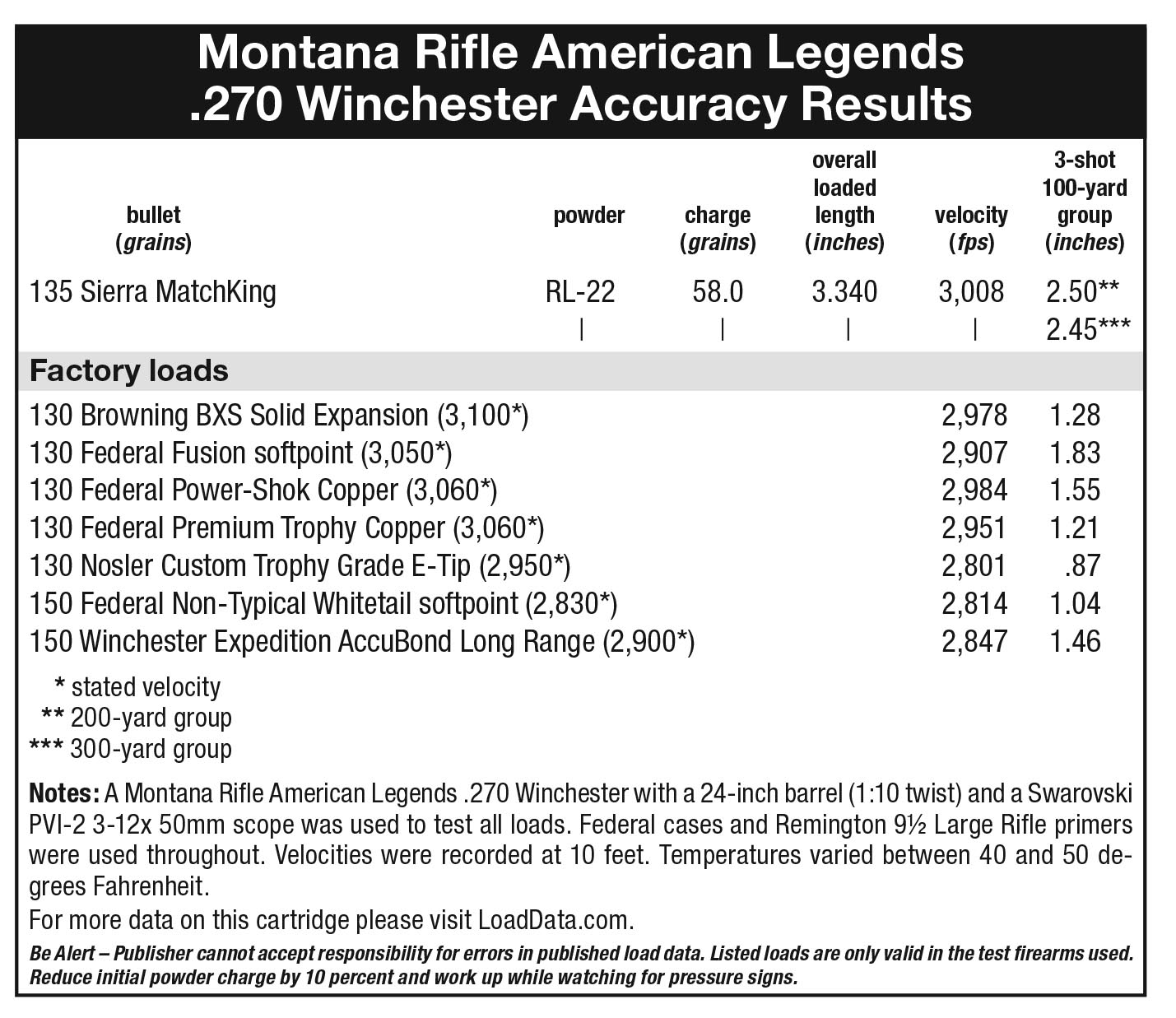
I went through this break-in technique years ago with a new barrel on a Montana Rifle Ultra Lite 7mm-08 Remington. The borescope also showed the same excellent finish on the bore’s surface. After going through the laborious break-in procedure, I shot 10 rounds and inserted the Borescope in the barrel. There was no rhyme or reason to the fouling left by the 10 shots. Two shallow blemishes on top of the lands near the muzzle contained a bit of powder fouling. In a few places, short streaks of copper fouling had accumulated on top of the lands and on the leading edge of the lands. To clean the bore, I filled it with Gunslick Foaming Bore Cleaner and let it soak for 30 minutes. A few strokes of a bronze brush followed by some patches removed the gunk, and the borescope showed the bore was clean from end to end.
This time I did not repeat the process on the Legends’ bore. I shot it a few times sighting-in a Swarovski scope, then ran a couple patches through the bore before shooting 70-some shots. The borescope showed the bore was fairly well covered with powder fouling. That fouling was mostly removed by a few patches soaked with household ammonia. A very few random streaks of copper fouling remained on the leading edges of the rifling lands. After the bore had soaked in Gunslick Foaming Bore Cleaner overnight, a few patches pushed out the blue slime, and the borescope showed the bore was clean from end to end.
The Legends’ 24-inch No. 2 contour barrel is free-floated in a Turkish walnut stock made by Minelli of Italy. Inletting is tight along the barrel channel, receiver and floorplate. Nice figure runs through the stock from the butt up through the grip and into the forearm. The forearm is a long 9.5 inches with a black ebony tip that matches the cap on the grip. The forearm is full and fills the hand. The grip is long and slender with a 4.5-inch circumference, and a deep flute on the right side of the comb cradles the base of the thumb. Panels on both sides of the grip have machine-cut point pattern checkering, and checkering wraps around the forearm.
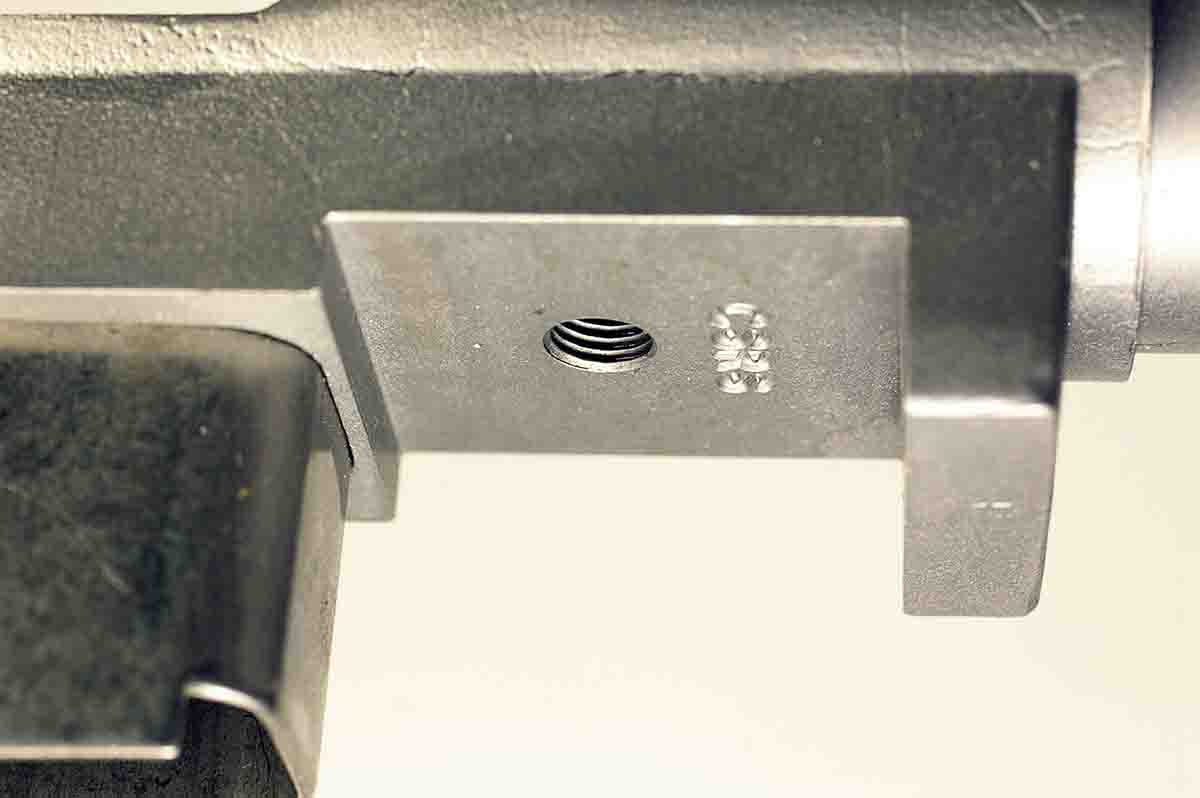
The stock comb is what Folkersen calls a Monte Carlo. The top rear of the comb is nearly the height of the rifle’s bore line, so it is tall. The comb is fairly thick, too. The front of the comb is slanted forward so it slides away from the cheek during recoil. The rear of the comb slopes down about an inch to the butt, which is capped with a Pachmayr Decelerator pad.
The recoil lug mortise in the stock and the flat for the receiver behind it are glass bedded. Some bedding is also used around the inletting for the tang. Specifications for the Legends state aluminum pillars in the stock are included for the two action screw holes, but there were no pillars on the test sample. The receiver inletting and barrel channel could use some finish to weatherproof the wood.
The Legends weighs 7 pounds, 5 ounces bare. Weight increased to 9 pounds, 2 ounces with the addition of a favorite Swarovski PVI-2 3-12x 50mm scope in Leupold steel two-piece bases and rings. That weight seems heavy these days for a .270 Winchester, but it would be ideal for a Legends chambered in .338 Winchester Magnum. The heft of the .270 resulted in a mild 17.5 foot-pounds of recoil when shooting Sierra 135-grain bullets with a muzzle velocity of 3,000 fps.
Weight in the correct places is a good quality in a rifle. The Legends balanced on the front action screw, which gave it a slight muzzle heaviness with the forward hand gripping the forearm and the rear hand around the grip.
I first shot the rifle with it supported on a bench using seven different .270 Winchester factory loads. Nosler Custom Trophy Grade 130-grain E-Tip bullets shot the best with two three-shot groups averaging .87 inch at 100 yards. Federal Non-Typical Whitetail 150-grain softpoint loads were close behind with two groups that averaged 1.04 inches. These roundnose bullets are a departure from regular .270 bullets with more of a streamlined tip. Non-Typical Whitetail loads have also shot accurately in two other .270 rifles.
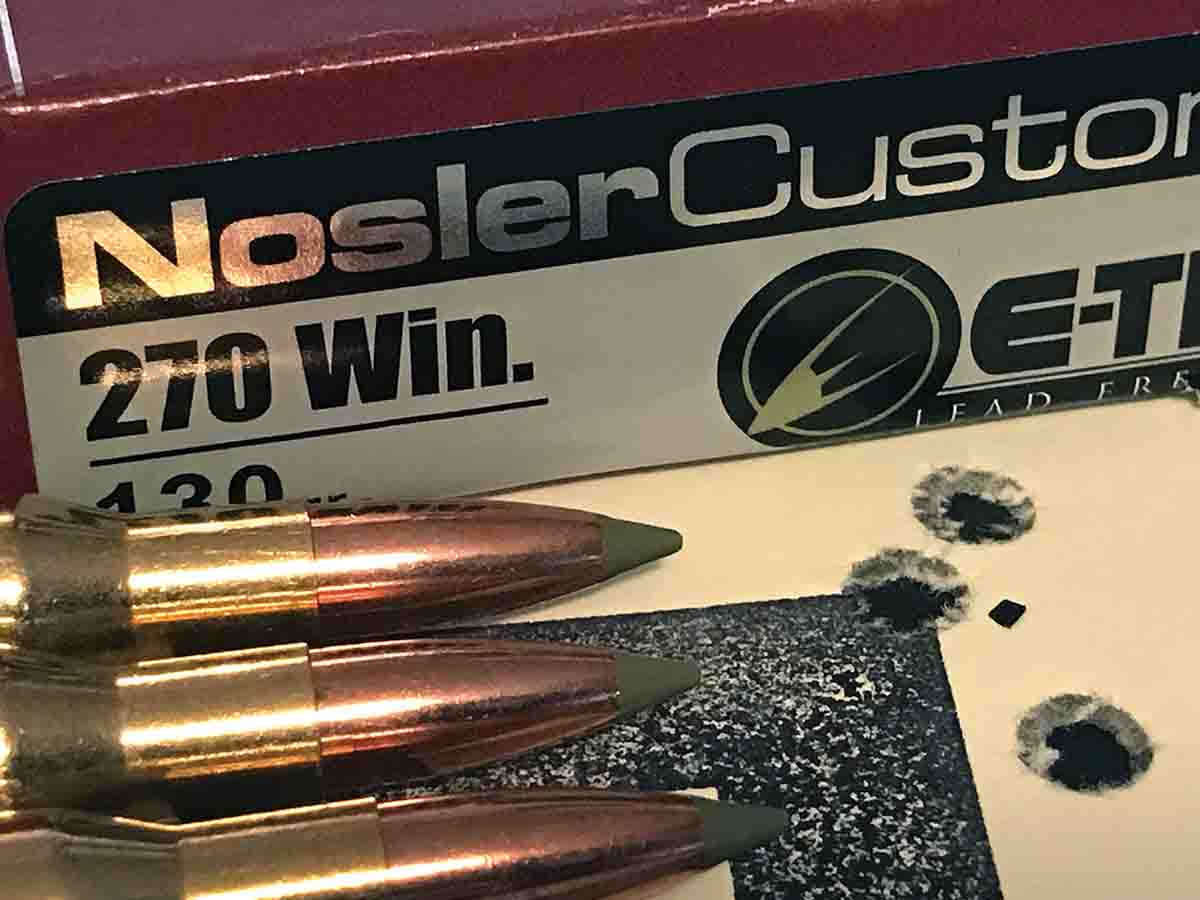
Away from the bench, I shot MatchKings while prone, sitting and offhand. Shooting from prone, the rifle was steady with its forearm braced on a Harris bipod and the toe of the stock supported on a sandbag. The stock’s cheekpiece and high comb kept my head erect. All I had to do was keep from disturbing the rifle while pulling the trigger. Hitting the center of a steel plate at 300 yards was a walk in the park.
The rifle was nearly as steady while sitting with the forearm wedged into shooting sticks. A post supported my back, my forearms were flat against my upraised thighs and my left hand held the toe of the stock tight against my shoulder. The long slope of the slender grip kept my wrist straight. With the .60-inch-thick Pachmayr Decelerator recoil pad and the rifle’s weight, recoil was just enough to knock the scope’s crosshairs off aim. Bullets spread some on the steel plate, but not enough to miss a marmot peeking over a boulder.
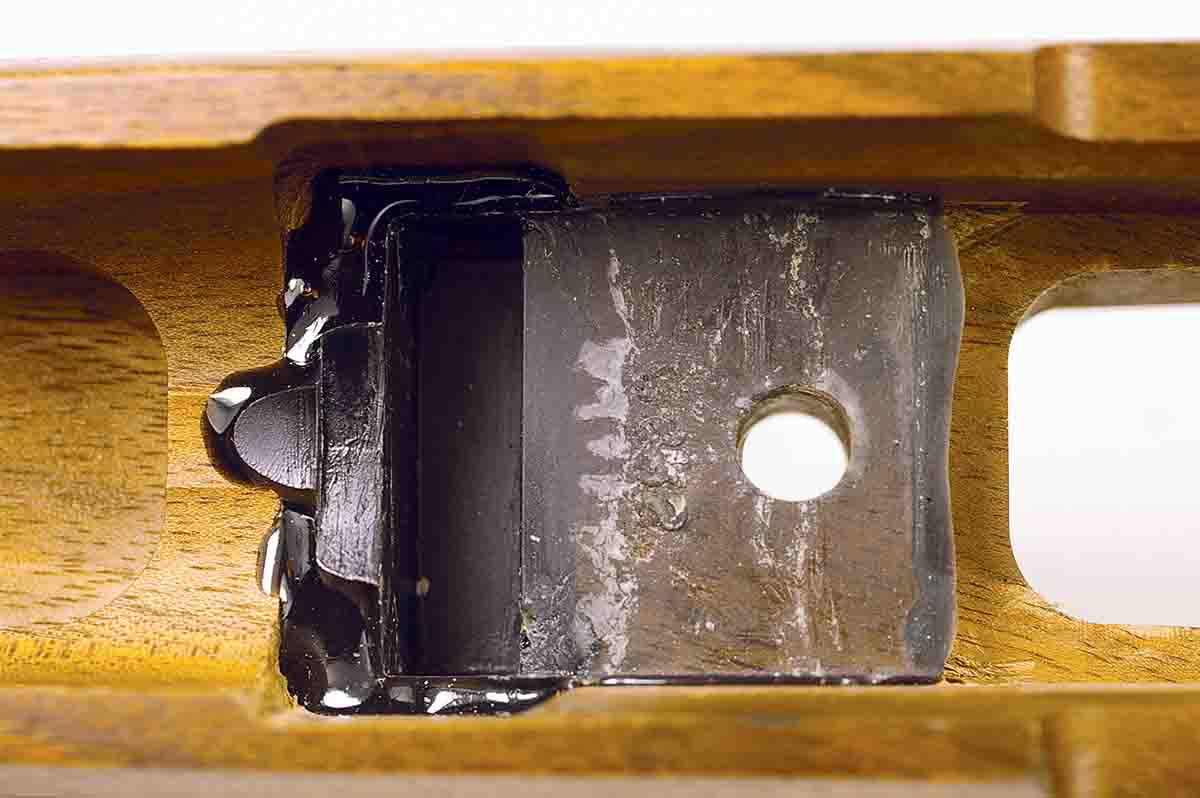
Alas, my offhand shooting could use some attention. With my cheek on the rear of the comb, I had to only slightly crane my neck to see through the scope. The slender grip came into play again, providing a grasp to pull the butt tight to my shoulder. My offhand shooting results were less than spectacular at 100 yards. But it was the first of spring, and there were a lot of winter’s cobwebs to sweep out.
A whole summer is still available to practice with the Legends rifle in preparation for hunting season. Come opening day, the rifle’s great trigger, dependable Model 1999 action and attractive walnut stock will be well-balanced between my hands.
The Legends is available in .243 Winchester, 6.5 Creedmoor, 6.5 PRC, .270 Winchester Short Magnum (WSM), .275 Rigby, .308 Winchester and .300 WSM. Standard–length cartridges include the .25-06 Remington, .270 Winchester, 7mm Remington Magnum, .30-06 and the .300 and .338 Winchester Magnums. The rifle with a blued finish retails for about $1,699 while the stainless steel Legends runs about $1,749. For more information contact montanarifleco.com.


